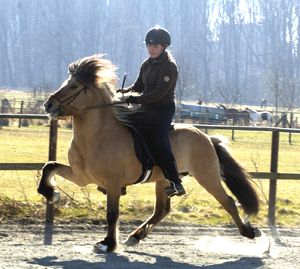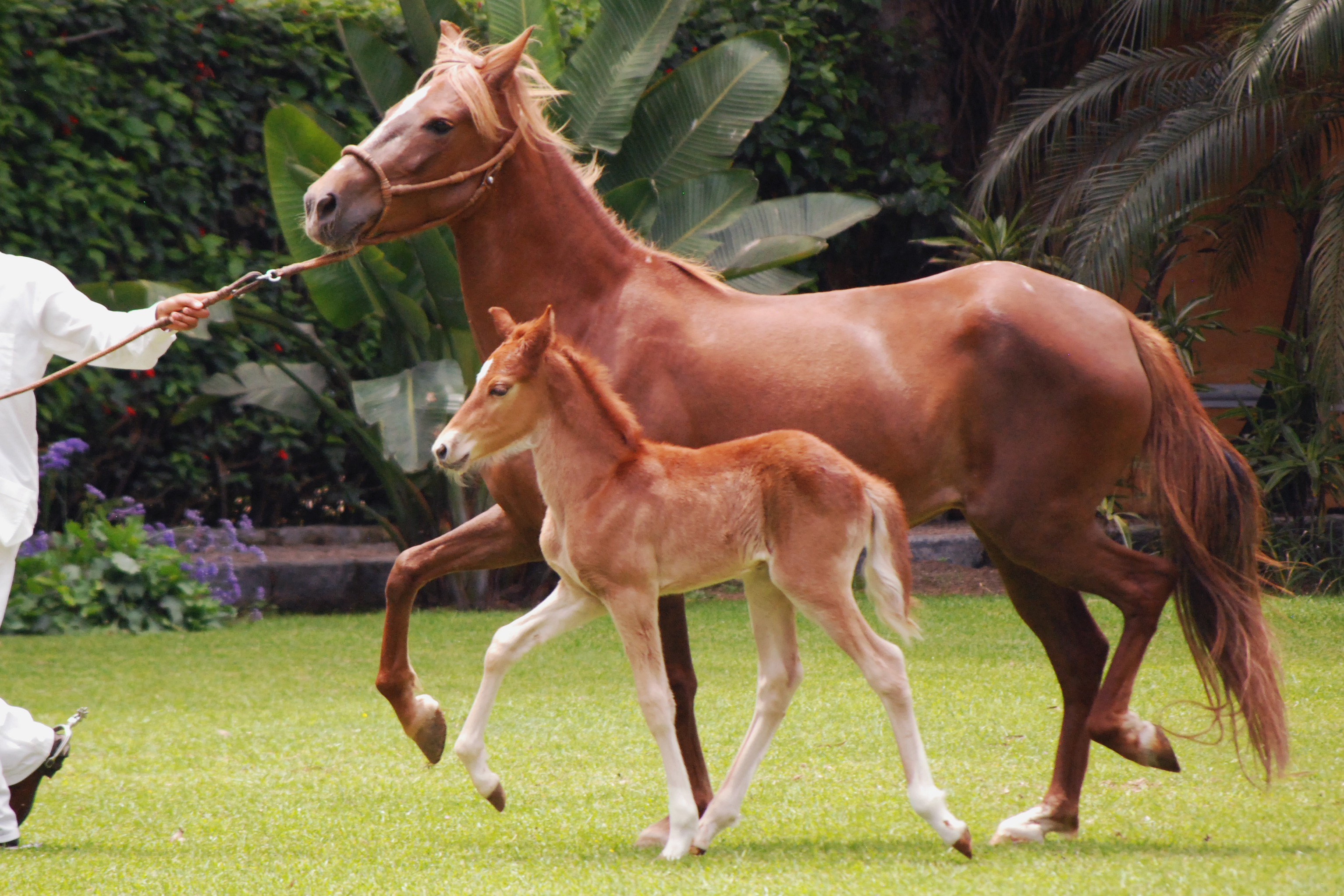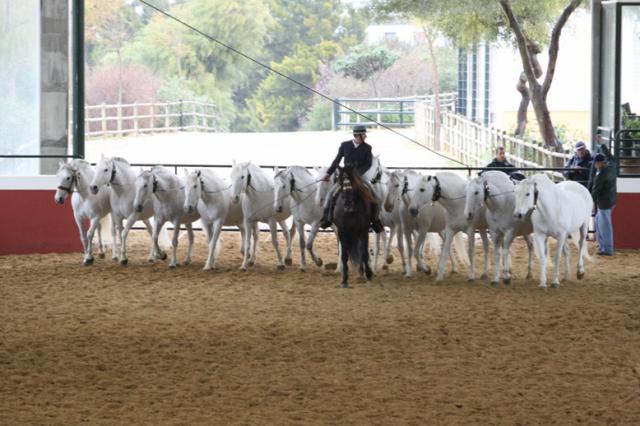|
Spanish Jennet Horse
The Spanish Jennet Horse is a modern American horse breed. It is gaited, with either pinto or leopard spotting; its conformation supposedly resembles that of the historical Spanish Jennet, a riding horse of Renaissance Europe, now absorbed into the Pura Raza Española. History The Jennet of Renaissance Spain was a type of riding horse characterised by an ambling gait. It is extinct,Phillip SponenbergSpanish Jennet: Living in the Past ''The Gaited Horse'', Breed Profiles. Archived December 18, 2007. and was, at least in part, absorbed into what is now the Pura Raza Española. The Spanish Jennet Horse is a new breed of Jennet type is being created through the efforts of the Spanish Jennet Horse Society. The Registry requires that horse for the Pintado division be of full Paso Fino heritage and the Atigrado division must be at least of 50% Paso blood. Outcrosses are allowed in the first generation to obtain the LP for the Registered Atigrado Spanish Jennet and must result i ... [...More Info...] [...Related Items...] OR: [Wikipedia] [Google] [Baidu] |
Horse Breed
A horse breed is a selectively bred population of domesticated horses, often with pedigrees recorded in a breed registry. However, the term is sometimes used in a broader sense to define landrace animals of a common phenotype located within a limited geographic region, or even feral "breeds" that are naturally selected. Depending on definition, hundreds of "breeds" exist today, developed for many different uses. Horse breeds are loosely divided into three categories based on general temperament: spirited "hot bloods" with speed and endurance; "cold bloods," such as draft horses and some ponies, suitable for slow, heavy work; and "warmbloods," developed from crosses between hot bloods and cold bloods, often focusing on creating breeds for specific riding purposes, particularly in Europe. Horse breeds are groups of horses with distinctive characteristics that are transmitted consistently to their offspring, such as conformation, color, performance ability, or disposition. These ... [...More Info...] [...Related Items...] OR: [Wikipedia] [Google] [Baidu] |
Ambling Gait
An ambling gait or amble is any of several four-beat intermediate horse gaits, all of which are faster than a walk but usually slower than a canter and always slower than a gallop. Horses that amble are sometimes referred to as "gaited", particularly in the United States. Ambling gaits are smoother for a rider than either the two-beat trot or pace and most can be sustained for relatively long periods, making them particularly desirable for trail riding and other tasks where a rider must spend long periods in the saddle. Historically, horses able to amble were highly desired for riding long distances on poor roads. Once roads improved and carriage travel became popular, their use declined in Europe but continued in popularity in the Americas, particularly in areas where plantation agriculture was practiced and the inspection of fields and crops necessitated long daily rides. The ability to perform an ambling gait is usually an inherited trait. In 2012, a DNA study found that ... [...More Info...] [...Related Items...] OR: [Wikipedia] [Google] [Baidu] |
Outcross
Out-crossing or out-breeding is the technique of crossing between different breeds. This is the practice of introducing distantly related genetic material into a breeding line, thereby increasing genetic diversity. Outcrossing can be a useful technique in animal breeding. The outcrossing breeder intends to remove the traits by using "new blood." With dominant traits, one can still see the expression of the traits and can remove those traits whether one outcrosses, line breeds or inbreeds. With recessive traits, outcrossing allows for the recessive traits to migrate across a population. Many traits are Mendelian and therefore exhibit a more complicated intermediate phenotype. The outcrossing breeder then may have individuals that have many deleterious genes that may be expressed by subsequent inbreeding. There is now a gamut of deleterious genes within each individual in many dog breeds. Increasing the variation of genes or alleles within the gene pool may protect against exti ... [...More Info...] [...Related Items...] OR: [Wikipedia] [Google] [Baidu] |
Peruvian Paso
The Peruvian Horse is a breed of light saddle horse known for its smooth ride. It is distinguished by a natural, four-beat, lateral gait called the ''paso llano.'' This breed is protected by the Peruvian government through Decree number 25919 of Peru enacted on November 28, 1992, and has been declared a Cultural Heritage of the Nation by the National Institute of Culture (INC). Due to the isolation suffered for about 400 years and the selection made by their breeders, this breed is very particular in their body proportions and an ambling gait or "paso llano" that is characteristic. It is typical of the northern Peruvian regions of the country from which it originated. Trujillo city is considered the cradle of typical Peruvian Horses. History Smooth-gaited horses, generally known as Palfreys, existed in the Middle Ages, and the Jennet in particular was noted for its ambling gaits. Peruvians trace their ancestry to these ambling Jennets; as well as to the Barb, which contribute ... [...More Info...] [...Related Items...] OR: [Wikipedia] [Google] [Baidu] |
Outcross
Out-crossing or out-breeding is the technique of crossing between different breeds. This is the practice of introducing distantly related genetic material into a breeding line, thereby increasing genetic diversity. Outcrossing can be a useful technique in animal breeding. The outcrossing breeder intends to remove the traits by using "new blood." With dominant traits, one can still see the expression of the traits and can remove those traits whether one outcrosses, line breeds or inbreeds. With recessive traits, outcrossing allows for the recessive traits to migrate across a population. Many traits are Mendelian and therefore exhibit a more complicated intermediate phenotype. The outcrossing breeder then may have individuals that have many deleterious genes that may be expressed by subsequent inbreeding. There is now a gamut of deleterious genes within each individual in many dog breeds. Increasing the variation of genes or alleles within the gene pool may protect against exti ... [...More Info...] [...Related Items...] OR: [Wikipedia] [Google] [Baidu] |
Paso Fino
The Paso Fino is a naturally gaited light horse breed dating back to horses imported to the Caribbean from Spain. Pasos are prized for their smooth, natural, four-beat, lateral ambling gait; they are used in many disciplines, but are especially popular for trail riding. In the United States two main groups of horses are popularly called "Paso Fino": One, also known as the Pure Puerto Rican Paso Fino (PPR), originated in Puerto Rico. The other, often called the Colombian Paso Fino or Colombian Criollo Horse (CCC), developed in Colombia. Though from similar Spanish ancestors, the two groups developed independently of one another in their home nations. History The Paso Fino name means 'fine step'. The Paso Fino is a blend of the Barb, Spanish Jennet, and Andalusian horse and was bred by Spanish land owners in Puerto Rico and Colombia to be used in the plantations because of their endurance and comfortable ride. All Pasos share their heritage with the Peruvian Paso, the American M ... [...More Info...] [...Related Items...] OR: [Wikipedia] [Google] [Baidu] |
Breed Registry
A breed registry, also known as a herdbook, studbook or register, in animal husbandry and the hobby of animal fancy, is an official list of animals within a specific breed whose parents are known. Animals are usually registered by their breeders while they are young. The terms studbook and register are also used to refer to lists of male animals "standing at stud", that is, those animals actively breeding, as opposed to every known specimen of that breed. Such registries usually issue certificates for each recorded animal, called a pedigree, pedigreed animal documentation, or most commonly, an animal's "papers". Registration papers may consist of a simple certificate or a listing of ancestors in the animal's background, sometimes with a chart showing the lineage. Types of registries There are breed registries and breed clubs for several species of animal, such as dogs, horses, cows and cats. The US ''Association of Zoos and Aquariums'' (AZA) also maintains stud books for captiv ... [...More Info...] [...Related Items...] OR: [Wikipedia] [Google] [Baidu] |
Extinct
Extinction is the termination of a kind of organism or of a group of kinds (taxon), usually a species. The moment of extinction is generally considered to be the death of the last individual of the species, although the capacity to breed and recover may have been lost before this point. Because a species' potential range may be very large, determining this moment is difficult, and is usually done retrospectively. This difficulty leads to phenomena such as Lazarus taxa, where a species presumed extinct abruptly "reappears" (typically in the fossil record) after a period of apparent absence. More than 99% of all species that ever lived on Earth, amounting to over five billion species, are estimated to have died out. It is estimated that there are currently around 8.7 million species of eukaryote globally, and possibly many times more if microorganisms, like bacteria, are included. Notable extinct animal species include non-avian dinosaurs, saber-toothed cats, dodos, m ... [...More Info...] [...Related Items...] OR: [Wikipedia] [Google] [Baidu] |
Pura Raza Española
The Andalusian, also known as the Pure Spanish Horse or PRE (Spanish language literally translates to “Spanish pure breed”. This name is sometimes capitalized when used in English-language publications, but is all lower-case in Spanish, which does not capitalize adjectives derived from proper nouns.), is a horse breed from the Iberian Peninsula, where its ancestors have lived for thousands of years. The Andalusian has been recognized as a distinct breed since the 15th century, and its conformation has changed very little over the centuries. Throughout its history, it has been known for its prowess as a war horse, and was prized by the nobility. The breed was used as a tool of diplomacy by the Spanish government, and kings across Europe rode and owned Spanish horses. During the 19th century, warfare, disease and crossbreeding reduced herd numbers dramatically, and despite some recovery in the late 19th century, the trend continued into the early 20th century. Exports of ... [...More Info...] [...Related Items...] OR: [Wikipedia] [Google] [Baidu] |
Gaited Horse
Gaited horses are horse breeds that have selective breeding for natural gaited tendencies, that is, the ability to perform one of the smooth-to-ride, intermediate speed, four-beat horse gaits, collectively referred to as ''ambling gaits''. In most "gaited" breeds, an ambling gait is a hereditary trait. This mutation may be a dominant gene, in that even one copy of the mutated allele will produce gaitedness. However, some representatives of these breeds may not always gait. Conversely, some naturally trotting breeds not listed above may have ambling or "gaited" ability, particularly with specialized training. Many horses can both trot and amble, and some horses pace in addition to the amble, instead of trotting. However, pacing in gaited horses is often, though not always, discouraged, though the gene that produces gaitedness appears to also produce pacing ability. Some horses do not naturally trot or pace easily, they prefer their ambling gait for their standard intermediate s ... [...More Info...] [...Related Items...] OR: [Wikipedia] [Google] [Baidu] |
Renaissance Europe
The Renaissance ( , ) , from , with the same meanings. is a period in European history marking the transition from the Middle Ages to modernity and covering the 15th and 16th centuries, characterized by an effort to revive and surpass ideas and achievements of classical antiquity. It occurred after the Crisis of the Late Middle Ages and was associated with great social change. In addition to the standard periodization, proponents of a "long Renaissance" may put its beginning in the 14th century and its end in the 17th century. The traditional view focuses more on the early modern aspects of the Renaissance and argues that it was a break from the past, but many historians today focus more on its medieval aspects and argue that it was an extension of the Middle Ages. However, the beginnings of the period – the early Renaissance of the 15th century and the Italian Proto-Renaissance from around 1250 or 1300 – overlap considerably with the Late Middle Ages, conventionally da ... [...More Info...] [...Related Items...] OR: [Wikipedia] [Google] [Baidu] |
Riding Horse
A riding horse or a saddle horse is a horse used by mounted horse riders for recreation or transportation. It is unclear exactly when horses were first ridden because early domestication did not create noticeable physical changes in the horse. However, there is strong circumstantial evidence that horse were ridden by people of the Botai culture during the Copper Age, circa 3600-3100 BCE. The earliest evidence suggesting horses were ridden dates to about 3500 BCE, where evidence from horse skulls found at site in Kazakhstan indicated that they had worn some type of bit. Evidence from Bhimbetka rock shelters suggest mounts were used at least 10,000 BCE. facets of 3 mm or more were found on seven horse premolars in two sites, Botai and Kozhai 1, dated about 3500–3000 BCE. It is theorized that people herding animals first rode horses for this purpose, presumably bareback, and probably used soft materials such as rope or possibly bone to create rudimentary bridles and h ... [...More Info...] [...Related Items...] OR: [Wikipedia] [Google] [Baidu] |



.jpg)


.jpg)